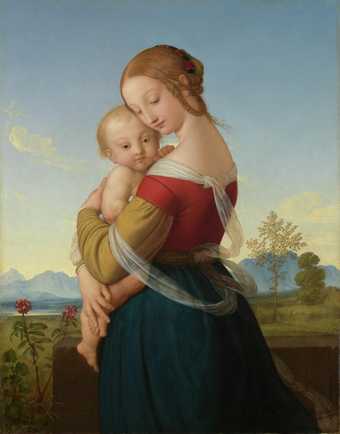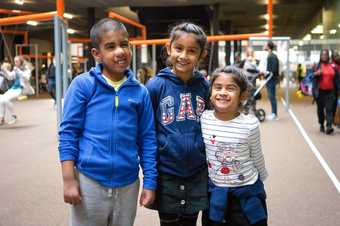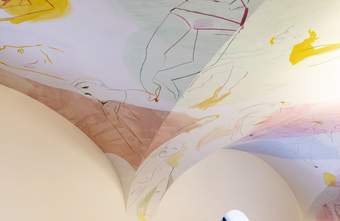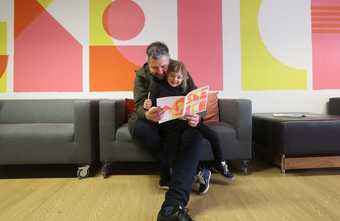So when I was pregnant with my daughter about 12 years ago, I was working then as a curator at Tate as I am now. I started thinking about the ways in which artists depict motherhood and just wondering like how many works there might be in Tate's collection. And I realised that actually it's something that really runs through the art of the last 400 years.
Then fast forward to more recently, I thought it would actually be a great book that explores this theme of motherhood.
With images for example of the Madonna and Child, you know art historians have written for a long time about the kinds of symbolism and the placement of hands and the positioning of the body and all of these things. And I guess I wanted to look at it a bit more from a kind of contemporary point of view and think, how could they speak to us now? You know what is this woman feeling and what is this scene actually really showing us about motherhood?
There's also a series of photographs by an artist called Laura Aguilar, who is showing a lesbian couple expecting. They're very intimate portraits of the couple, very loving couple. It was very important to me that we show parenthood can take many different forms and different guises.
With the boom of second generation feminism and in the 60s and 70s, artists like Mary Kelly, actually started to make the experience of motherhood and the domestic realm part of their artwork.
So Mary Kelly's very iconic work, Postpartum Document, really is a kind of complex form of diary or journaling, that she kept for the first few years of her son's life. You know she really was trying to kind of chart in quite a dispassionate way, the things that were happening, the developments that he was going through but also the way that she was feeling about it and her relationship with him.
Artists will always challenge preconceived ideas, you know this is what artists do. They're trying to represent an alternative view of what motherhood might be.
The Dennis Morris photograph Mother's Pride, so obviously it's you know kind of making reference to the well-known name brand of white sliced bread. But this is a black family, in Dalston. And I think that the photograph really captures this look of pride on the mother's face, it's a very very beautiful and intimate portrait.
I think that there is something that comes through some of the artworks, which led me to think this would be a good idea for a, for a chapter about a kind of having a kind of pride in one's offspring.
There's a very intriguing set of photographs that were very common in the Victorian era. They became known as Hidden Mothers, because the babies were kind of set up in position and because of the slow shutter speeds and the length of time that it would take to make a photograph, the mothers kind of hide behind chairs or behind cloaks or behind the furniture.
New mothers often, often speak about this sense of of having lost a part of themselves or a loss of selfhood, you know that you become kind of in some way consumed with putting your children first and putting yourself behind the scenes.
Being a mother myself, I felt that it was important to write about some of these things and to show that they are themes that are explored through art and you know that mothers are represented and that mothers also can use art as a vehicle for exploring what motherhood means to them.
We are all born of mothers, you know whether we choose to be mothers, whether we relate to that term or parenting in a different way. It's object for the making of art, you know art that addresses, big themes. Big ideas. Who we are. Where we come from. How we relate to our world. Our identities. Our sense of self, of family, all of these things have been explored throughout the history of Art.






